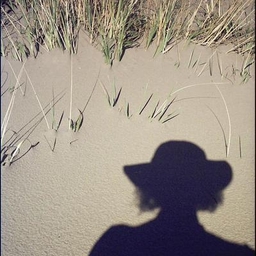-
1 month ago |  nasa.gov | Margo Pierce
nasa.gov | Margo Pierce
Airplane manufacturers running noise tests on new aircraft now have a much cheaper option than traditional wired microphone arrays. It’s also sensitive enough to help farmers with pest problems. A commercial wireless microphone array recently created with help from NASA can locate crop-threatening insects by listening for the sounds they make in fields.
-
Nov 27, 2024 |  nasa.gov | Margo Pierce
nasa.gov | Margo Pierce
If every commuter drove the same few roads at the same time every day, the traffic would be unbearable. That’s exactly what’s happening in the skies above the nation, known as national airspace (NAS). Multiple flights from different airlines try to use the most direct flight paths, converging on the same airports. With limited runway space, that causes jumbo-sized traffic congestion.
-
Oct 13, 2024 |  copernical.com | Margo Pierce
copernical.com | Margo Pierce
Controlled Propulsion for Gentle Landingsby Margo Pierce for NASA NewsLos Angeles CA (SPX) Oct 13, 2024The Curiosity and Perseverance Mars rovers continue to provide a wealth of information about the Red Planet. This was made possible in part by the sky crane landing systems that safely lowered them to the planet's surface. Their successful descent, managed by eight powerful engines, depended on one small part - a valve.
-
Oct 11, 2024 |  nasa.gov | Margo Pierce
nasa.gov | Margo Pierce
The Curiosity and Perseverance Mars rovers continue to provide a wealth of information about the Red Planet. This was made possible in part by the sky crane landing systems that safely lowered them to the planet’s surface. Their successful descent, managed by eight powerful engines, depended on one small part – a valve.
-
Sep 18, 2024 |  phys.org | Margo Pierce
phys.org | Margo Pierce
Moon dust, or regolith, isn't like the particles on Earth that collect on bookshelves or tabletops—it's abrasive and it clings to everything. Throughout NASA's Apollo missions to the moon, regolith posed a challenge to astronauts and valuable space hardware.
-
Sep 17, 2024 |  nasa.gov | Margo Pierce
nasa.gov | Margo Pierce
Moon dust, or regolith, isn’t like the particles on Earth that collect on bookshelves or tabletops – it’s abrasive and it clings to everything. Throughout NASA’s Apollo missions to the Moon, regolith posed a challenge to astronauts and valuable space hardware. During the Apollo 17 mission, astronaut Harrison Schmitt described his reaction to breathing in the dust as “lunar hay fever,” experiencing sneezing, watery eyes, and a sore throat.
-
Jul 31, 2024 |  nasa.gov | Margo Pierce
nasa.gov | Margo Pierce
It’s not easy to predict the path of forest fires—a lot depends on constantly changing factors like wind. But it is crucial to be as accurate as possible because the lives, homes, and businesses of the tens of thousands of people living and working in fire-prone areas depend on the reliability of these predictions. Sensors mounted on airplanes or drones that provide a picture of the fire from above are an important tool, and that’s where NASA comes in.
-
May 29, 2024 |  nasa.gov | Margo Pierce
nasa.gov | Margo Pierce
Anyone who lives near an airport or is experiencing the emergence of a cicada brood can quickly identify the source of that ongoing noise. However, running tests to identify the noise created by a new drone or find pests in a field of crops requires a high-tech solution that maps sound. With help from NASA, Interdisciplinary Consulting Corporation (IC2) introduced a new Wireless Array to do just that – anywhere, anytime.
-
Apr 19, 2024 |  nasa.gov | Margo Pierce
nasa.gov | Margo Pierce
Humans aren’t the only mammals working to mitigate the effects of climate change in the Western United States. People there are also enlisting the aid of nature’s most prolific engineers – beavers. Using NASA-provided grants, two open-source programs from Boise State University in Idaho and Utah State University in Logan are making it possible for ranchers, land trust managers, nonprofits, and others to attract beavers to areas that need their help.
-
Apr 17, 2024 |  nasa.gov | Margo Pierce
nasa.gov | Margo Pierce
Natural disasters like volcanic eruptions, floods, and tornados can dramatically change the surface of Earth to the point where alterations are visible in space. Changes driven by human actions and interventions, such as mining and deforestation, are also visible in satellite imagery. For over 50 years, NASA’s Landsat satellites have recorded our planet’s changing surface.

nasa.gov | Margo Pierce
nasa.gov | Margo Pierce
copernical.com | Margo Pierce
nasa.gov | Margo Pierce
phys.org | Margo Pierce